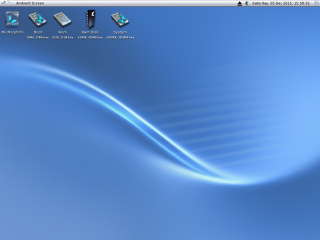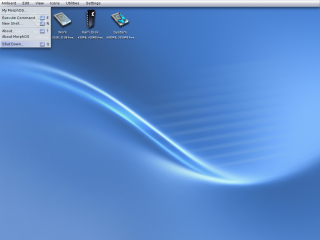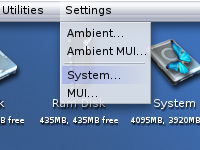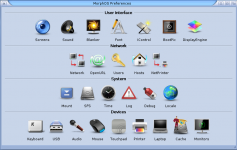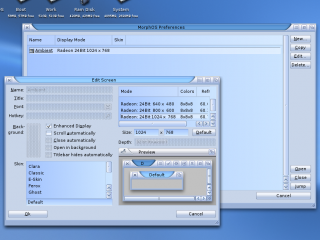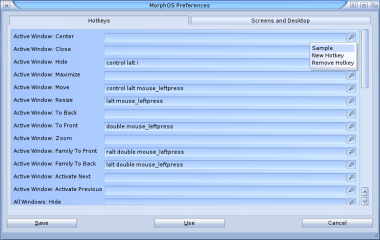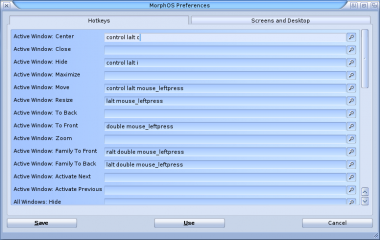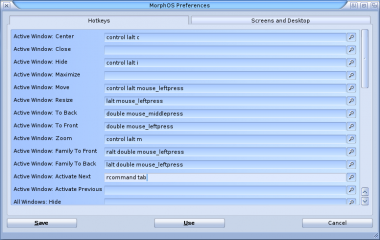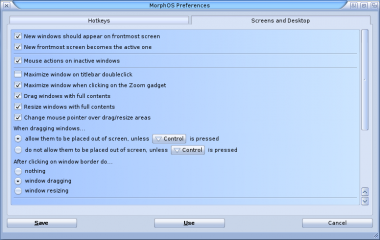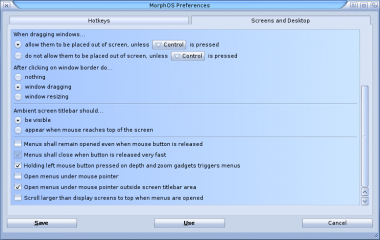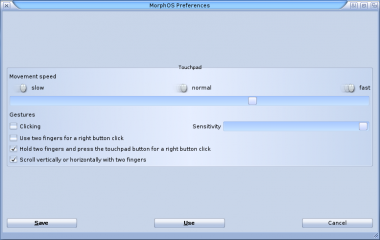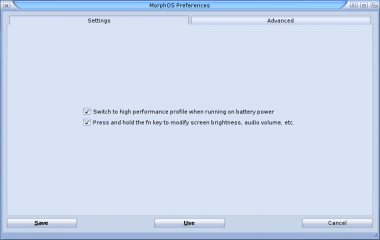Getting Started
From MorphOS Library
Contents
A Beginner's Guide to MorphOS
You have installed MorphOS to a compatible machine, but... now what? You could always go and install a pre-configured package like Chrysalis, but you would end up with a system configured for someone else's taste and you still wouldn't know how to actually use the operating system. If you are in this situation and you would like to learn how MorphOS works, this is a tutorial for you! The tutorial will guide you through the things you should do and notice after a fresh install, with practical examples from basic configuration options to installing new software. It won't cover all the details and is just an opinion how to proceed, but it should give you some knowledge how to continue on your own and make your own decisions.
Getting Comfortable with the User Interface and the Ambient Desktop
The First Boot
After a boot you're presented with the plain looking Ambient, the desktop environment of MorphOS. The first thing you should learn is to get familiar with the basic usage, and to tune the usability settings so that they won't annoy you. The worst thing is if a user plays around a bit and just curses at the system if it doesn't work like expected or wanted. You aren't forced to just one kind of behaviour with MorphOS!
The right mouse button is widely used on MorphOS and if you're using a device without a physical button for it, check the tips over here. Pressing the right mouse button over the Ambient screen opens Ambient's pulldown menus where you can find few important options. For example, options to shut down the system, to open a new shell window, or to open system settings.
System Settings
The MorphOS Preferences application is used to edit system-wide settings. It can be launched from the Ambient's pulldown menu by selecting the "Settings->System..." menu option or by browsing to the System:Prefs/ drawer and double clicking the Preferences icon.
Screens
If MorphOS didn't get the optimal resolution of your monitor with DDC, a different screen mode can be selected from the Screens settings. If the wanted mode isn't seen there, open the Monitors settings instead to create a completely new mode.
If you have a graphics card with low amount of memory, you can try to get the memory consumption smaller by disabling the Enhanced Display setting (3D accelerated graphics functions for 2D screens) or by reducing the color depth. More information can be found from here.
MorphOS skins (themes for the graphical appearance) can also be changed from the Screens settings.
IControl
IControl settings are the most important settings for the overall usability experience. This is the place to look to avoid the usual comments like "Why doesn't X work like Y in the other OS?", "Why there isn't a feature Z?", "I can't use a system like this!". Everyone should check these settings first before going any further.
Hotkeys
MorphOS has many nice features to be used with keyboard shortcuts or mouse buttons, but only few are activated by default. Lets activate more!
To add a new hotkey for the wanted function click the popup button on the right side, select "Sample", and press the wanted keyboard combination. The pressed combination is then recorded to the corresponding line and should be shown there. Repeat the procedure if you didn't get it as wanted on the first try. Changed settings will be taken in use after you click Save or Use button.
Here is how to set the "control left-alt c" keyboard combination to center the active window on screen:
Here are some other recommendations to activate, but feel free to use your own preferences for the hotkeys:
- Active Window: To Back - double click with the middle mouse button, to send a window back of other windows.
- Active Window: Zoom - "control left-alt m", to toggle between maximizing and minimizing of a window.
- Active Window: Activate Next - "left-command tab", to have the alt-tab functionality found on many other operating systems. Using ctrl-tab or alt-tab isn't recommended because they would overlap with the shell's functionality on MorphOS. Command-tab happens also be the same with OSX.
Note: You can also add several hotkeys for a function by selecting the New Hotkey option from the popup button's menu.
Screens and Desktop
Important options how windows and menus behave can be found from the Screens and Desktop settings.
I'd recommend to turn on the Maximize window when clicking on the Zoom gadget option. The Zoom gadget will then toggle the window size between the full screen (with screen title bar still visible) and the initial window size and position. I find it much more comfortable than the legacy placement between two obscure positions. The previously configured Zoom hotkey will also work better with this option enabled.
If you prefer to be able to drag windows out of the screen without pressing any qualifier key, like on mainstream systems, select the When dragging windows... allow them to be placed out of screen, unless Control is pressed option.
The default behaviour of the pulldown menus may be a bit unfamiliar for the old Amiga users, but there are several options to get them as wanted. I like to disable the Menus shall remain opened even when mouse button is released option and enable the Open menus under mouse pointer outside screen titlebar area option.
Touchpad
If you're using a laptop system, check the Touchpad setttings. You might want to disable clicking from the pad to avoid any accidental clicks.
Laptop
If you're not a Mac user, you might find it odd that you need to press the fn key when using the function keys to normal activities, and not when modifying for example the screen brightness. The Press and hold the fn key to modify screen brightness, audio volume, etc. option will change the functionality the other way around.
Some systems also have the Automatic LCD brightness and keyboard backlight control option here. Disable it if you're annoyed by changing lightning.
